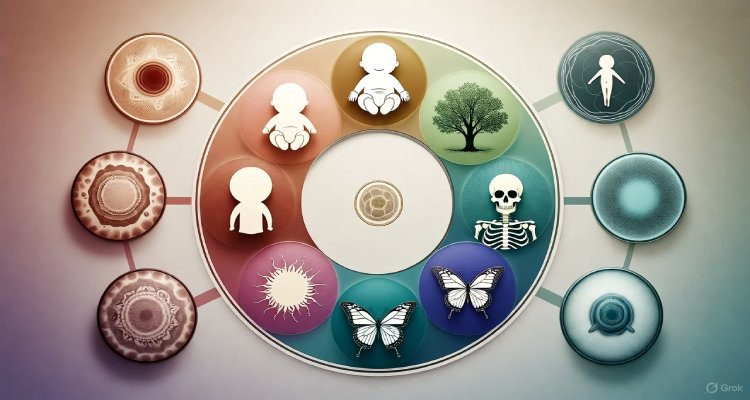Titan’s Methane Rain: Saturn’s Otherworldly Storms
On Titan, Saturn’s largest moon, methane rains from the sky—creating lakes and storms in an alien, Earth-like cycle
Methane Rain on Titan: Echoes of Earth in a Frozen World
More than 800 million miles from Earth, Saturn’s largest moon, Titan, is rewriting what we thought we knew about weather. Thick with smog and steeped in mystery, Titan has long intrigued scientists with its hazy orange atmosphere and strangely familiar landscapes. And now, it’s making headlines again—this time, for storms made not of water, but liquid methane.
Thanks to a series of observations captured in July 2023 by NASA’s James Webb Space Telescope and the Keck II ground-based observatory in Hawaii, scientists have now confirmed that methane clouds are actively forming and raining down on Titan’s northern pole.
It’s a glimpse into a world that feels oddly like our own—except colder, darker, and far more alien.
Clouds of Methane, Not Water
Unlike Earth’s blue skies, Titan’s are tinged gold by a dense atmosphere loaded with organic molecules. But clouds still drift above, and storms still roll in—only here, they’re composed of methane. On Titan, this gas, which fuels barbecues on Earth, becomes a cold, oily liquid due to the moon’s extreme temperatures, hovering around -290°F (-179°C).
The newly captured images show methane evaporating from Titan’s surface, rising into the atmosphere, cooling, and condensing into dense clouds. Eventually, these clouds burst, releasing rain that pools into massive lakes and seas near the moon’s polar regions.
Titan isn’t just strange—it’s familiar in disguise. The process mirrors Earth’s own water cycle but swaps out H₂O for CH₄.
Titan’s Polar Lakes: A Landscape Carved by Methane
Most of this weather activity is concentrated around Titan’s north pole, where sprawling bodies like Kraken Mare—the largest known sea of liquid hydrocarbons in the solar system—dot the icy terrain. These lakes are fed by methane rain and shaped by slow, steady erosion, much like rivers and lakes on Earth.
But unlike any landscape here at home, Titan’s shorelines are carved into rock-hard ice, and its rain resembles slick oil instead of fresh water. Still, the rhythm of evaporation, cloud formation, and rainfall feels strikingly familiar—making Titan a bizarre parallel to Earth.
Chemical Reactions in the Sky: A Prebiotic Puzzle
The intrigue doesn’t end with clouds and lakes. Recent data from Webb also detected the presence of a fleeting molecule: the methyl radical (CH). This compound is produced when sunlight breaks down methane, igniting a chain reaction that builds increasingly complex organic chemicals.
These chemical cocktails swirl in Titan’s upper atmosphere, potentially forming the very ingredients that once sparked life on Earth. For astrobiologists, Titan is a natural test tube—a place to study how life’s building blocks can form under extreme conditions.
“Titan’s chemistry is like a blueprint from Earth’s distant past,” says Dr. Elizabeth Turtle, lead scientist for NASA’s upcoming Dragonfly mission. “It’s one of the most Earth-like—and yet alien—places in the solar system.”
Where Does the Methane Come From?
One of Titan’s enduring mysteries is how it maintains such a steady supply of methane. Scientists know the gas is constantly broken down by sunlight and lost to space. So how does the atmosphere stay replenished?
Some researchers believe Titan may have underground reservoirs of methane, similar to aquifers on Earth. Others speculate that cryovolcanoes—volcanoes that spew icy slurries instead of lava—could be quietly releasing fresh methane from the moon’s interior.
If that internal supply ever stopped, Titan’s methane cycle would eventually collapse, drying up its lakes and halting the rain.
Titan’s Future: A Drone with Big Questions
The next chapter in Titan’s story will be written by Dragonfly, a drone-like rotorcraft scheduled to launch in 2027. When it touches down on Titan’s surface in the 2030s, it will begin a bold exploration of dunes, frozen terrain, and potentially life-generating chemistry.
Dragonfly won’t just take pictures—it will sample the ground, analyze organic compounds, and search for chemical signatures that hint at the possibility of life or prebiotic evolution.
It’s the kind of mission that could completely shift our understanding of what’s possible in our solar system.
Final Thoughts: A World Both Alien and Familiar
Titan forces us to rethink the limits of planetary weather and habitability. With its methane rains, frigid lakes, and strangely Earth-like cycles, it’s a world that defies easy explanation. Yet, it reminds us that nature often follows patterns—even if the ingredients change.
As our telescopes gaze farther and our missions grow bolder, Titan remains one of the most compelling destinations in our search for life beyond Earth. It’s not just a moon—it’s a window into a parallel reality where the skies weep methane and the ground whispers secrets from the ancient solar system.
Disclaimer:
This article is based on scientific data from NASA, the James Webb Space Telescope, and affiliated research institutions. Content is intended for educational and informational purposes only.
SOURCE : India Today











